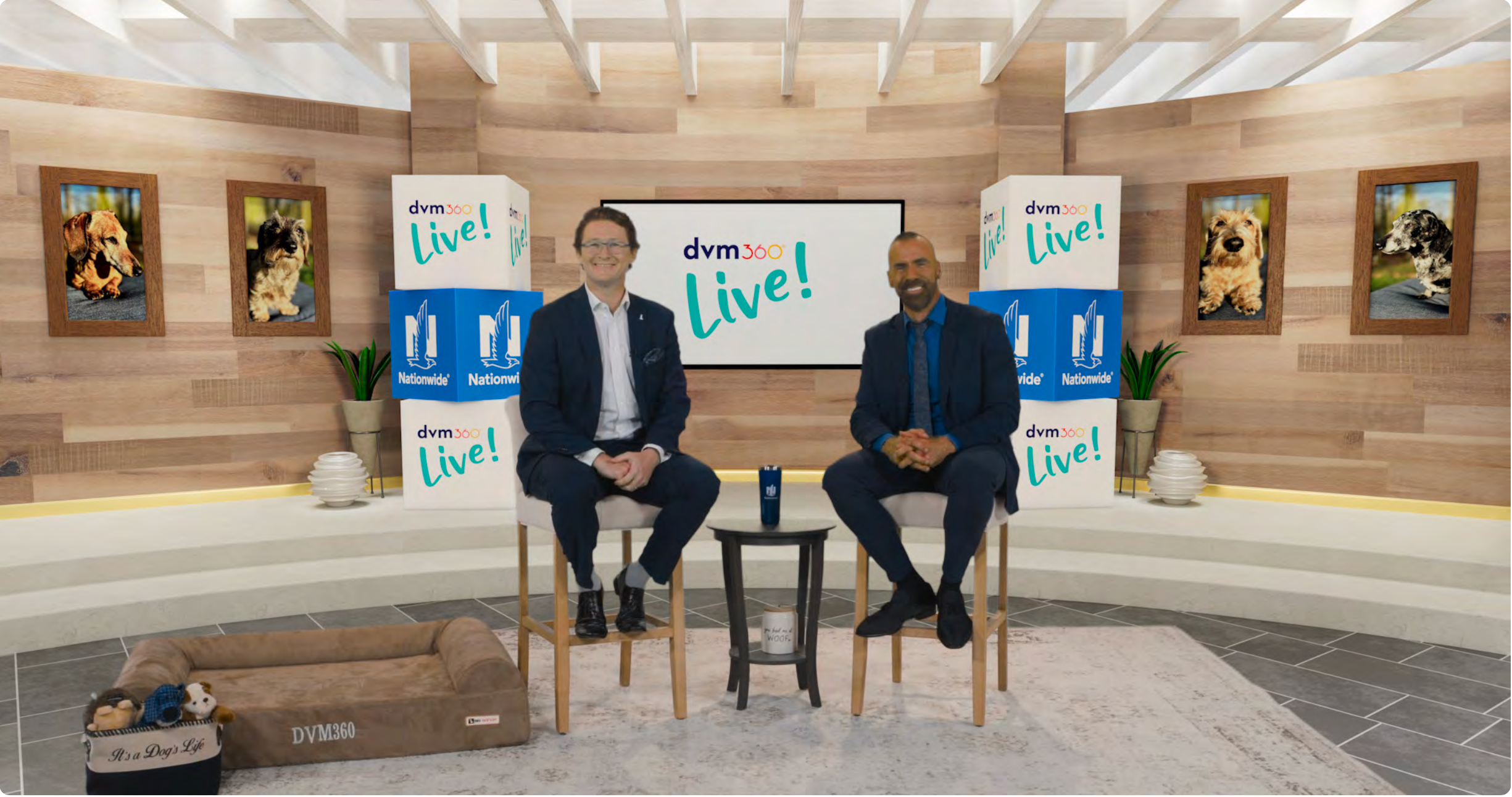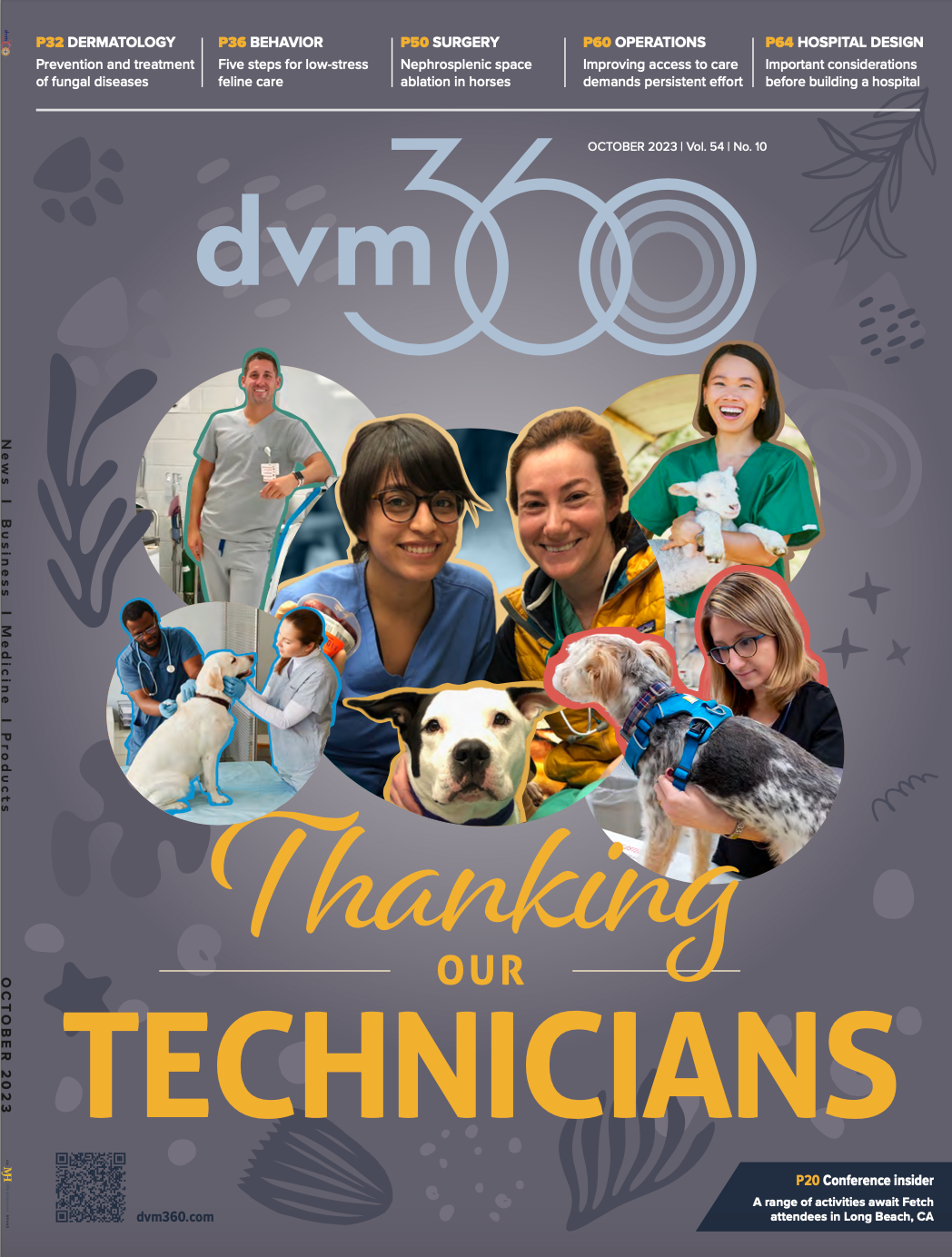Driven by data
How age- and breed-specific information can improve education, risk assessment, and treatment of pets
This content is sponsored by Nationwide.
Facing staff shortages and pulled in many directions every day, veterinary teams may have difficulty explaining a full clinical picture to pet owners. Adam Christman, DVM, MBA, of dvm360 Live!, spoke with Jules Benson, BVSc, MRCVS, to discuss a hopeful solution built by Nationwide. The online platform provides information about various breeds on the risks of certain conditions, preventive steps, and expectations of an animal’s well-being throughout their life.
Jules Benson, BVSC, MRCVS (left) and Adam Christman, DVM, MBA (right).

Adam Christman, DVM, MBA: Can you provide an overview of how pet data can help veterinary teams and pet families?
Jules Benson, BVSC, MRCVS: Veterinary healthcare teams often lack immediate access to evidence-based information about specific breeds or life stages, so they rely on personal experience in giving advice to pet parents. However, while you might see 200 Havanese dogs in your entire career, Nationwide has data encompassing 3,000 Havanese dogs. The value lies in bringing that data (the equivalent of hundreds of veterinarians’ experiences) into one place so that teams can benefit from it in the exam room.
Christman: Tell us about the new digital platform that Nationwide has launched around pet data.
Benson: We just launched the Nationwide® Pet HealthZone®, which can be found at thepethealthzone.com. It is a new platform that currently includes 55 breeds, which accounts for about 93% of the dogs insured by Nationwide. We’ll be adding cats and more dog breeds soon, as well.
The goal of this platform is to make learning about pet health a fun experience. Information is personalized by breed and life stage, because we know conditions affecting a young adult English bulldog are different than those affecting a senior Chihuahua, and so on. It leverages data from millions of pets, which allows us to answer questions like, “What are the conditions that this pet is at highest risk for developing?” Going back to the Havanese example, senior Havanese are 4 times more likely to develop bladder stones and 5 times more likely to develop valvular heart disease than other dogs. Data like this allows us to create an immersive experience that takes the pressure off the veterinary health care team when it comes to education.
Christman: How would knowing that a pet is prone to a certain condition— osteosarcoma, hip dysplasia, and so forth—enhance the care provided for that pet?
Benson: Some of the things we’re focused on are how to save time for veterinary teams, how to prime clients for tough conversations, and how to give pet owners the information needed to ease these conversations. Sometimes, addressing predisposed conditions can make the veterinary team seem like the bad guys, but showing them the Pet HealthZone allows them to be prepared and inquire about what to do next.
The other side of this is—taking Rottweilers as an example, who are 10 times more likely to develop osteosarcoma than other dogs—the Pet HealthZone will paint a picture of what owners can expect for diagnostics, treatment, and even costs. Knowing all of this ahead of time removes some of the pain from these conversations.
Christman: How would this same awareness prepare a veterinary team and practice to explain such conditions as well as pet health recommendations to a patient?
Benson: It takes the burden off the veterinary team. The reality is that nobody has enough time for lengthy educational conversations, especially with staff shortages. They feel the pressure when it comes to explaining disease, nutrition, behavior, and so forth. The Pet HealthZone came out of wanting to provide a reliable, data-driven resource created by veterinary professionals and breed experts. We know pet parents want that information, and now it’s easy for teams to feel good about sharing it.
